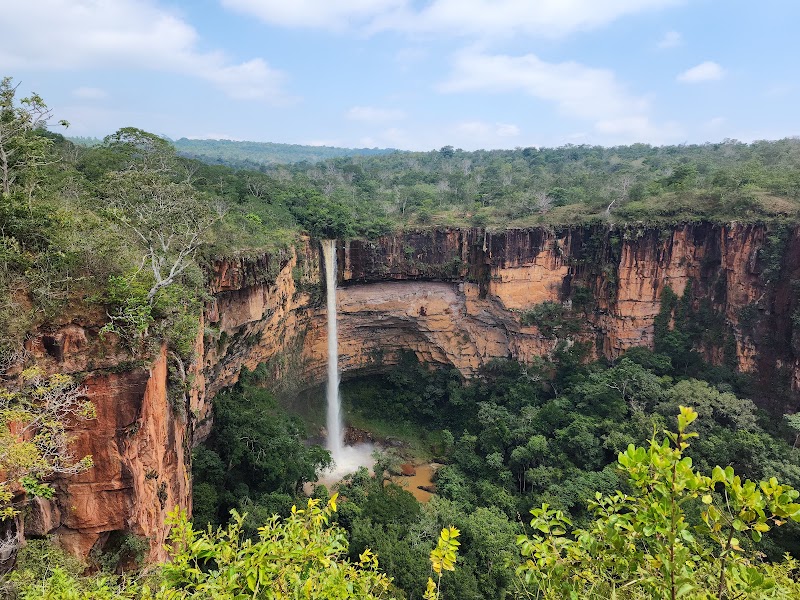
Jaguar Spotting Safaris in Poconé: Tracking the Elusive Giants of Mato Grosso
Experience the thrill of tracking jaguars in the Pantanal wetlands near Poconé, Mato Grosso. This safari offers a balanced adventure through forest trails and riverbanks, perfect for those eager to witness one of South America's fiercest predators in its natural habitat.
Wear Waterproof, High-Traction Footwear
Trails can be muddy and slippery, especially near rivers and wetlands. Boots with solid grip and water resistance keep you steady and comfortable.
Hydrate Regularly Throughout the Safari
The Pantanal’s tropical heat can be draining. Carry at least 2 liters of water and sip often to avoid dehydration during early morning and afternoon treks.
Schedule Safaris for Early Morning or Late Afternoon
Jaguars are most active during cooler parts of the day. Midday hikes are less rewarding and more physically demanding due to heat.
Use Binoculars and Zoom Lenses for Wildlife Viewing
Keeping a respectful distance while spotting jaguars or other wildlife is key. Opt for equipment to observe details without disturbing animals.
Jaguar Spotting Safaris in Poconé: Tracking the Elusive Giants of Mato Grosso
Poconé, Mato Grosso, pulses with raw, untamed energy—a gateway to spotting one of South America's most elusive predators: the jaguar. The jaguar safaris here are not just wildlife tours; they are carefully paced, immersive ventures into the Pantanal wetland ecosystem where the hedged forests and winding rivers dare you to move quietly and with purpose.
The terrain challenges you without overwhelming: expect flat stretches of dense forest trails mixed with muddy banks and slow streams that push your gear and stamina. Most routes span 4 to 8 kilometers with minimal elevation gain, making it a moderate trek that demands alertness over brute force. The thick canopies occasionally clear to reveal long views across grasslands speckled with birds and caiman, where the jaguar silently patrols.
Our best chance to catch sight of the big cat comes in the early morning or late afternoon when the heat lets up and the jaguars slip from shade to shade, fiercely guarding their territory. The guides move deliberately, attuned to nuanced signs: a fresh paw print, a barely audible splash by the river. These animals command respect—their presence is a reminder that this wild place remains uncompromised.
Preparation is key. Pack high-traction waterproof boots to manage slick trails and sudden river crossings. Hydrate steadily; the tropical heat is both friend and challenge here. Light, breathable clothing protects against mosquitoes and sun, and binoculars or camera with zoom lens enhance the experience without disturbing natural behaviors. Timing your safari outside the wettest months (December to March) improves accessibility and safety.
Beyond the jaguar, the safari reveals an ecosystem rich with life. Herons clamoring along waterways, curious capybaras pausing just long enough to observe you, and the constant chorus of insects steadily reminding you that this land breathes with life deeply entwined with the apex predator you're tracking.
Poconé’s jaguar safaris balance thrill and practicality; they are an invitation to walk slowly, see sharply, and listen widely to the wilderness’s subtle language. It’s a demanding, rewarding experience that does more than uncover jaguars—it connects you with a fiercely independent natural force that thrives here. This is adventure without superfluity, calibrated to sharpen your senses and ground your footsteps on this wild frontier.
Nearby Trips
All Adventures
Boat Charters
Water Activities
Adventures near Poconé, Mato Grosso
Discover the unique and memorable adventures that make Poconé, Mato Grosso special.
Frequently Asked Questions
What are the best chances of spotting a jaguar on the safari?
Jaguars are most active in the early mornings and late afternoons. Safaris scheduled during these periods increase your chances. Following fresh tracks and water edges also improves chances.
Is the terrain suitable for beginner hikers?
The terrain is mostly flat with some muddy patches. It is accessible for casual hikers in reasonable shape but requires appropriate footwear and stamina for walking 4-8 kilometers.
Are guided tours mandatory for jaguar safaris in Poconé?
Yes, experienced guides are essential. They know local animal habits, track signs, and ensure safety while minimizing disturbance to wildlife.
What other wildlife might I see besides jaguars?
Capybaras, giant river otters, caiman, toucans, and a variety of herons and egrets are commonly spotted, highlighting the rich biodiversity of the Pantanal.
How sensitive is the jaguar population to disturbance?
Jaguars are solitary and wary. Responsible safaris keep a respectful distance and avoid loud noises to reduce stress on these apex predators.
What safety measures should I be aware of during the safari?
Stay close to the guide, avoid sudden movements or loud sounds, wear insect repellent, and carry ample water. Be prepared for muddy, slippery conditions near water bodies.
Recommended Gear
Waterproof Hiking Boots
Protect your feet from mud, water crossings, and uneven trails.
Lightweight, Long-Sleeve Clothing
Defends against sun exposure and insects without overheating.
Binoculars
Help identify distant wildlife without disturbing jaguars or other animals.
Insect Repellent
Vital during warmer months when mosquitoes and biting insects are most active.
Local Insights
Hidden Gems
- "Araras Eco Lodge viewing platform — quiet early morning spot for jaguar and bird watching"
- "Mirante do Rio Cuiabá — a lesser-known vantage overlooking winding river bends"
- "Jaguar tracks trail — a discreet path where fresh paw prints often appear"
Wildlife
- "Giant river otters"
- "Capybaras"
- "Harpy eagle"
- "Southern tamandua (anteater)"
History
"Poconé sits at the heart of traditional Pantanal cattle ranching culture, with many locals historically living alongside the wetlands and wildlife, influencing sustainable tourism trends."
